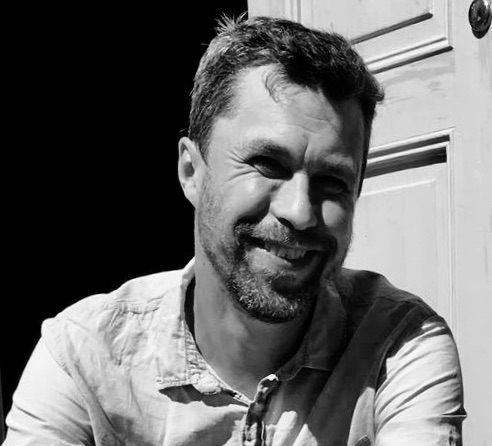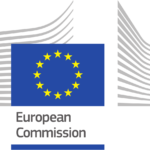3rd EU-JAV Newsletter
December 2020
Introduction
by Olivier Epaulard, Coordinator of the Joint Action, INSERM

Welcome to the readers of the third JAV newsletter!
We are happy to reach you again, even in such peculiar times, and to keep informing our readers on the latest news of this Joint Action.
- First of all, we recently conducted our General Assembly. It gathered not only the JAV members, but also different stakeholders and member state delegates. This successful event demonstrated that despite the Covid-19 situation, the activities of this project move ahead, and that the interest in vaccines is still strong in public health.
- This Newsletter is dedicated to WP8 – the JAV team dealing with vaccine hesitancy and trust, and with their expression in social medias; its features an ultimate focus regarding how to build trust in vaccination in Europe.
There is a great interest, both European and global, in the messages of this project: Obviously, this is underlined by the historic moment we are facing now: Covid-19 vaccines are reaching the phase of validation by health authorities and of distribution to people. There is great hope in these new vaccines, although in parallel many questions rise: will they reach all at-risk people? Will they be met with trust? May we take the chance of the mass vaccination ahead to reinforce the confidence bewteen people and vaccines? It appears that the questions the JAV is dealing with are more relevant than ever…
Merry Christmas to all – and see you soon in 2021!
Building a solid background for vaccination in Europe
Interview with Dr. Jonas Sivelä, Leader of Work Package 8, Finnish Institute for Health and Welfare of Finland

Interview prepared by Madeleine Theochari
Tell us a few words on your work done in Work Package 8
In the EU-JAV we have been working on Vaccine Hesitancy and Uptake, quite a predominant issue nowadays. We wanted to see how we can achieve better vaccines uptake and counteract hesitancy by looking at how the situation concerning vaccine hesitancy and uptake is experienced by the Member State authorities, how they work with these issues, and what kind of experiences can be shared within Europe. Our work will enable of a framework for cooperation on the issue in Europe.
First, we work on finding out what kind of reasons had been identified behind low and high vaccination coverage and what kind of practices are found to promote the latter. We look at how these practices had been implemented in the public health work and what lessons had been learned. We focus on cases that could be presented and shared as constructive examples of both successful and unsuccessful actions, practices and decisions.
Could you please share with us some of your findings?
Despite all the difficulties and delays arising from the Covid-19 situation, we were able to gather data from the institutions responsible for the National Immunization programmes and other stakeholders in 28 countries, and to piece together the countries’ experiences and perceptions on questions concerning vaccine hesitancy and uptake.
From our initial analysis, the most prevalent barriers and enablers behind suboptimal vaccination coverage seem to be the lack of confidence in the safety of the vaccines, the perceived risks of the vaccine-preventable diseases and matters related to specific groups within the population. These are initial insights, as the analysis is still ongoing.
The MMR and influenza vaccines were consistently cited as the vaccines with the most suboptimal uptake, followed by the HPV vaccine. Other identified issues concerned vaccine registers, while collaboration within and between organizations was a factor strengthening vaccine uptake and public confidence.
This last finding was also echoed in one of our main objectives, to create an online platform in order to provide guidance for developing practices and policies aiming at maintaining good vaccine uptake in EU JAV Member States and the wider region. Our online Vaccine hesitancy and uptake network on the European Health Policy Platform was successfully launched in May 2020, providing a searchable database including the survey reports from the 28 countries (data gathered from stakeholders will be available in January 2021).
Who do you see benefiting from your work in the EU JAV?
The work done as part of the EU JAV has many beneficiaries and end-users, both direct and indirect. First, you have the health sector and all responsible authorities, who can use the research done in our work-package in order to better plan and communicate their immunisation practices, or use the on-line platform to access relevant information, articles or technical reports, but also to participate in on-line events and webinars. Then, there are the population groups that are falling behind in vaccine uptake targets, such as families with small children, health care workers or low-income groups, who can greatly benefit from authorities better understanding and reversing of vaccine hesitancy.
What can we expect from WP8 in the coming year?
Although 2020 turned out to be a tumultuous year, in 2021 we are looking forward to achieving a great deal, such as completing our survey among stakeholders, finalising the analysis of the data and producing the Final report on barriers and enablers behind suboptimal vaccination coverage. Furthermore, it is our intent to increase the visibility and enrich the content and the capabilities of the platform and to attract more users. At the moment, the Covid-19 pandemic decreases the possibilities of countries and stakeholders to invest resources in developing and producing contents for the platform. We hope that the situation will ease up during the first half of 2021. Given recent developments, we hope to also use the platform for supporting acceptance among population of the new Covid-19-related vaccines. Besides, it is our aim to see the platform operating beyond the scope and time-bound lifespan of the EU-JAV, as a shared tool for disseminating knowledge and supporting the capacity to improve vaccine acceptance throughout Europe.
Why would someone join the Vaccine Hesitancy and Uptake Network on the European Health Policy Platform?
Well, if you are a health professional, a researcher or indeed a public authority involved in immunizations, such a municipal authority, you will be able to find, among other things, very interesting contents on studies and projects, or examples of successful campaigns and interventions. A wide range of themes will be covered in the content such as the HPV, influenza, varicella, and MMR vaccines, Nurse education programmes, the WHO TIP tool, experiences from mandatory vaccination programmes, issues relating to vaccination of asylum seekers, ways for Municipalities collaboration within a country, monitoring systems of uptake and vaccine acceptance in hospital staff, surveys on HCW vaccine confidence, etc.
Dear Jonas/ Dr. Sivela thank you very much for this interview.
Monitoring population sentiments and opinions towards vaccines and vaccination
Interview with Dr. Antonietta Filia, leader of Work Package 8, Italian National Health Institute (Istituto Superiore di Sanità).

Tell us a few words on your work done in Work Package 8
In Work Package 8, the Italian National Health Institute is leading Task 8.3 with the support of the IRCCS, Bambino Gesù Children’s Hospital. The aim of Task 8.3 is to monitor population sentiment and opinions towards vaccines and vaccination, through social media and other web data sources, and to identify the most influential on-line players on vaccine-related topics.
So far the work done has consisted in designing and developing a vaccine confidence monitoring platform that integrates and allows the visualization of different data sources. First we defined the objectives and main features for the platform and gathered needs, opinions and suggestions from all EU-JAV partners (e.g. features to be included, data to be visualized). We then performed a detailed analysis of the scientific literature to identify previous experiences, benefits and difficulties related to the analysis of social media. Following this, we defined and validated a list of keywords related to vaccine confidence, in four languages: Italian, English, French, and most recently Spanish. Through the use of these keywords and natural language processing system, the platform systematically analyses and presents real-time data from social media and web resources, extracts topics, sentiment, opinions, and investigates collective behaviour on the web.
Which data sources does the platform monitor?
Currently the platform monitors mainly Twitter which is an important medium for communication of vaccine sentiments and more accessible for research purposes (with respect to for example Facebook). In recent years there has been a steady growth in vaccine-related conversations on Twitter. The platform also analyses the trends on Google searches on the topic “vaccines”, and the number of clicks on Wikipedia vaccine-related pages. Recently we have also started analysing vaccine-related conversations on the social media platform Reddit. All results are shown according to the language from which the data originates (Italian, French, English and Spanish). It is also possible to select a time period of interest.
Why is monitoring real time public vaccine confidence on social media and the web important?
In 2019 vaccine hesitancy was declared by the WHO as one of the biggest threats to global health. Social media is often used to spread content expressing vaccine hesitancy and potentially affecting real-world behaviour around vaccines. Real time social media monitoring, also referred to as “social listening” is a valuable tool to understand the sentiments and opinions of the public about vaccinations, and to detect early signals of lowering public confidence that can then be potentially counteracted through adaptive strategies and then monitored over space and time.
By monitoring vaccine-related conversations occurring in social media and monitoring other web sources, it becomes possible to identify specific topics to be prioritised for communication, to address misinformation, to understand and monitor trends. This type of monitoring also contributes to the analysis of barriers and enablers of vaccine uptake among web users. Finally, it allows the identification of vaccine hesitant communities and characterization of subgroups of users, and this can be useful for tailoring interventions to specific populations.
Why is identifying the most influential players on-line players on vaccine-related topics relevant?
Identifying the influencers either against or in favour of vaccinations is relevant since they potentially play a major role in shaping people’s opinions and sentiments on this topic. Besides identifying influencers, the platform can show how the information spreads and the outreach of each influencer i.e. the size of the group that they have an influence on. The information can be used to develop better communication strategies and new ways to promote positive health behaviours on the web. We will create a list of trustworthy sources and identify channels for dissemination of messages, as well as new stakeholders for dissemination and new ways to deliver health messaging.
Who do you see benefiting from your work in the EU JAV, and in what way?
Real-time social media monitoring and analysis of data from other online web sources can inform public health authorities and policy makers about vaccine sentiment and the occurrence of vaccine hesitancy that could negatively impact vaccine uptake, thereby providing a better understanding of low vaccine coverage and enabling the improvement of communication and the development of other adaptive strategies to improve uptake. It could also inform public health authorities in a timely manner of significant vaccine-related events especially those that could potentially have a negative effect on public beliefs and behaviour and for which a rapid response is important, for example, to help decrease the spread of false information. Finally, this work could provide public health authorities with some useful insights to develop and improve overall communication strategies on vaccines and vaccination.
What can we expect from WP8 in the coming year?
In the coming year, we will finalize the monitoring platform. We are looking into expanding the social media platforms to be analysed and may also add new languages. Given the ongoing pandemic, and the upcoming we are analysing also Covid-19 vaccine related conversations and hopefully contribute to improving communication around these vaccines and supporting acceptance among the population. Finally, we will produce a report on our work. The report will present the available data from the web sources, relevant for surveillance of vaccine confidence analysis, and will include guidelines to inform communication campaigns. Ultimately our goal in this Work Package is to improve understanding of vaccine hesitancy, and improve confidence and trust in vaccines throughout Europe.
Dear Antonietta/ Dr. Filia thank you very much for this interview.
EU-JAV
European Joint Action on Vaccination
This joint action was co-funded by the European Union’s Health Programme (2014-2020) under Grant Agreement no. 801495

